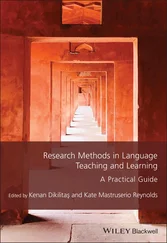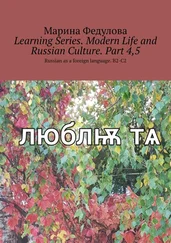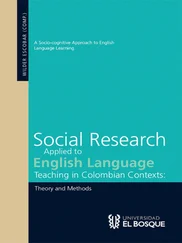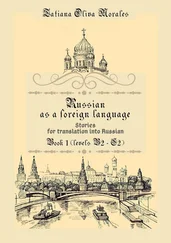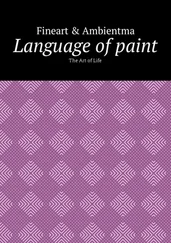It lies in the nature of all artistic education that an intensive study and awareness of historical examples is considered to be a fundamental prerequisite for all individual development. Learning from and often quite literally copying the examples of the ‘old masters’ in the study of the fine arts, or music, for instance, has always been considered the basis of learning the art. Thus, the position advanced here is that viewing teaching as an art, as opposed to a science, also implies a fundamentally different relation to previous traditions and practices of education which cannot be considered as outdated per se, but rather as potentially rich sources of learning and inspiration. Hence, some of the arguments and positions which have been touched upon in this chapter will be re-examined in the later discussion and conclusions at the end of this study.
In his extensive and wide ranging study of the history of language teaching, Louis G. Kelly is highly critical of a pronounced absence of historical awareness on the part of language teachers of the continually recurring nature of key issues and developments. He contrasts this with the value artists place on establishing new connections to past traditions and the gains they accrue from doing so:
While one can ascribe a linear development to sciences, the development of an art is cyclical. Old approaches return, but as their social and intellectual context are changed, they seem entirely new. Very often the creative artist seeks inspiration from the past, but transforms the idea in taking it over, as did Bartok, for instance, with the contrapuntal techniques of Bach. Language teaching has shared neither the honesty nor the self-knowledge of the fine arts. Whereas artists are willing to seek inspiration from the past, teachers, being cursed with the assumption that their discoveries are necessarily an improvement on what went on before, are reluctant to learn from history. Thus it is that they unwittingly rediscover old techniques by widely differing methods of research.141
This lack of historical knowledge can be seen as not only relevant to language teaching, but also as characteristic for a general deficiency present in much educational thinking in general.
In considering the entire historical development of the concept of teaching as an art, it becomes evident that the most critical questions regarding the responsibilities and possibilities of teacher education in developing artistry have remained unanswered. Although there has been a clear recognition of the decisive role of teacher education in helping to develop artistry, there has been a striking absence of concrete programs, or even ideas, on how to put this into actual practice. In many respects this may reflect the inevitable difficulties inherent in attempting to substantially change existing programs and also a general lack of opportunities to introduce innovations. The traditional divisions between teacher education and teaching practice can be seen as a further hindrance in connecting artistic teaching with corresponding programs of artistic teacher education.
Despite these difficulties, the question of how to encourage the artistic development of the teacher has continually been seen as a decisive issue for educators who have adopted this concept. From an historical perspective it is apparent that many of the same views have been consistently adopted, albeit with somewhat different emphases. What has been consistently maintained is that a substantial revision and extension of pre-service and in-service training will be required to realize the potentials of this concept.
However, in the developments of teacher education programs which have taken place in both Europe and the United States in recent years, the artistic perspectives which they have advanced appear to have played a relatively insignificant role. Hence the clear necessity for first designing and then evaluating appropriate programs has remained a critical question.
In pursuing this admittedly complex task, it is clearly necessary to focus on a specific context. In the following chapters an attempt will be made to address these unresolved issues in connection with an empirical research study. The description and evaluation of the week-long clowning workshops which have been offered by Vivian Gladwell for English teachers over the last decade, lies within the field of EFL teacher education and specifically in the context of in-service language teacher development. Although each subject area obviously has its own particular form/s and content of in-service training, many of the critical issues regarding language teacher education which will be examined here are considered to be potentially relevant to other fields as well.
2 In-Service Language Teacher Development: Goals and Concepts
The in-service courses for language teachers which will be examined in this study fall into the general category of teacher development. Although there is a substantial overlap between the terms teacher education , teacher training and teacher development and they are often even used interchangeably, each has a somewhat different meaning and context.
Teacher education is generally understood to refer to the type of education through which one accumulates a basis of subject knowledge, relevant theoretical knowledge, and the practical skills enabling one to become a teaching professional. In the context of pre-service training, this usually includes substantial periods of content-based study, the study of educational and learning theory, as well as student teaching in the classroom in conjunction with a mentoring program. Teacher training is considered to be that level of either pre-service or in-service training which focuses on the specific knowledge and methodology of what is taught and emphasizes classroom skills and techniques.142 It typically focuses on short-term goals.143 Henry Widdowson has formulated a sharp distinction between the two:
In general terms, the distinction between education and training can be formulated in the following way. Training is a process of preparation towards the achievement of a range of outcomes which are specified in advance. This involves the acquisition of goal-oriented behaviour which is more or less formulaic in character and whose capacity for accommodation to novelty is, therefore, very limited. Training, in this view, is directed at providing solutions to a set of predictable problems and sets a premium on unreflecting expertise. (…) Education on the other hand is not predicated on predictability in this way. It provides for situations which cannot be accommodated into preconceived patterns of response but which require a reformulation of ideas and the modification of established formulae. It focuses, therefore, not on the application of ready-made problem-solving techniques but on the critical appraisal of the relationship between problem and solution as a matter of continuing inquiry and of adaptable practice.144
In contrast to both training and education, teacher development focuses on the teacher’s attitudes and the concurrent development of self-awareness, awareness of others and the attainment of a heightened sensitivity in the classroom. It thus emphasizes general growth and is not targeted to a specific task.145 Although there are undoubtedly elements of teacher development in pre-service training, it is more commonly connected to the continued education of teachers after their initial training has been completed, and thus most commonly occurs in the context of in-service work. Teacher development is thus generally designed to encourage growth through building on previous experiences.
In trying to draw relevant distinctions between teacher training and teacher development, Adrian Underhill compares the underlying arguments for taking two different types of in-service courses:
Читать дальше

